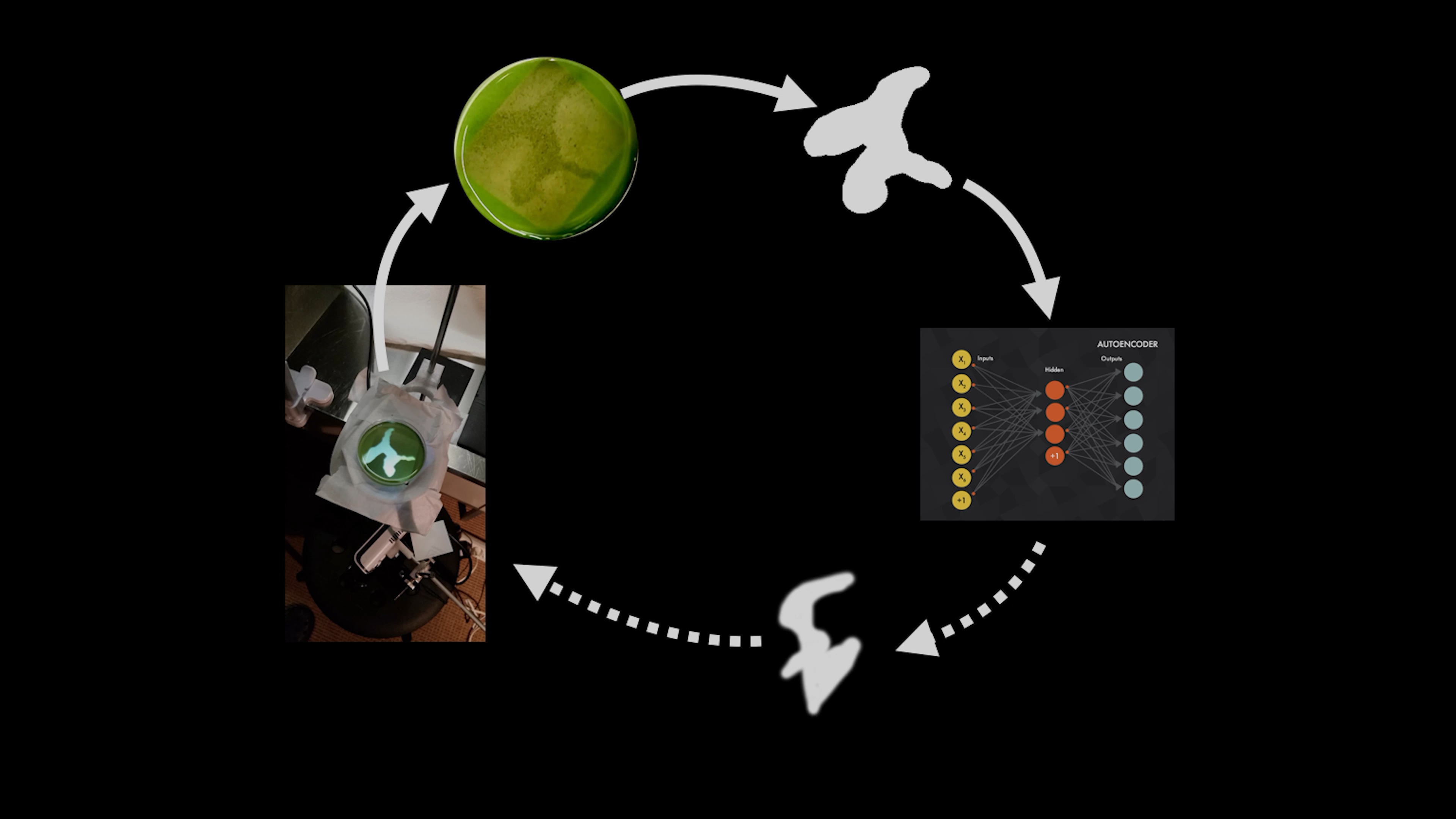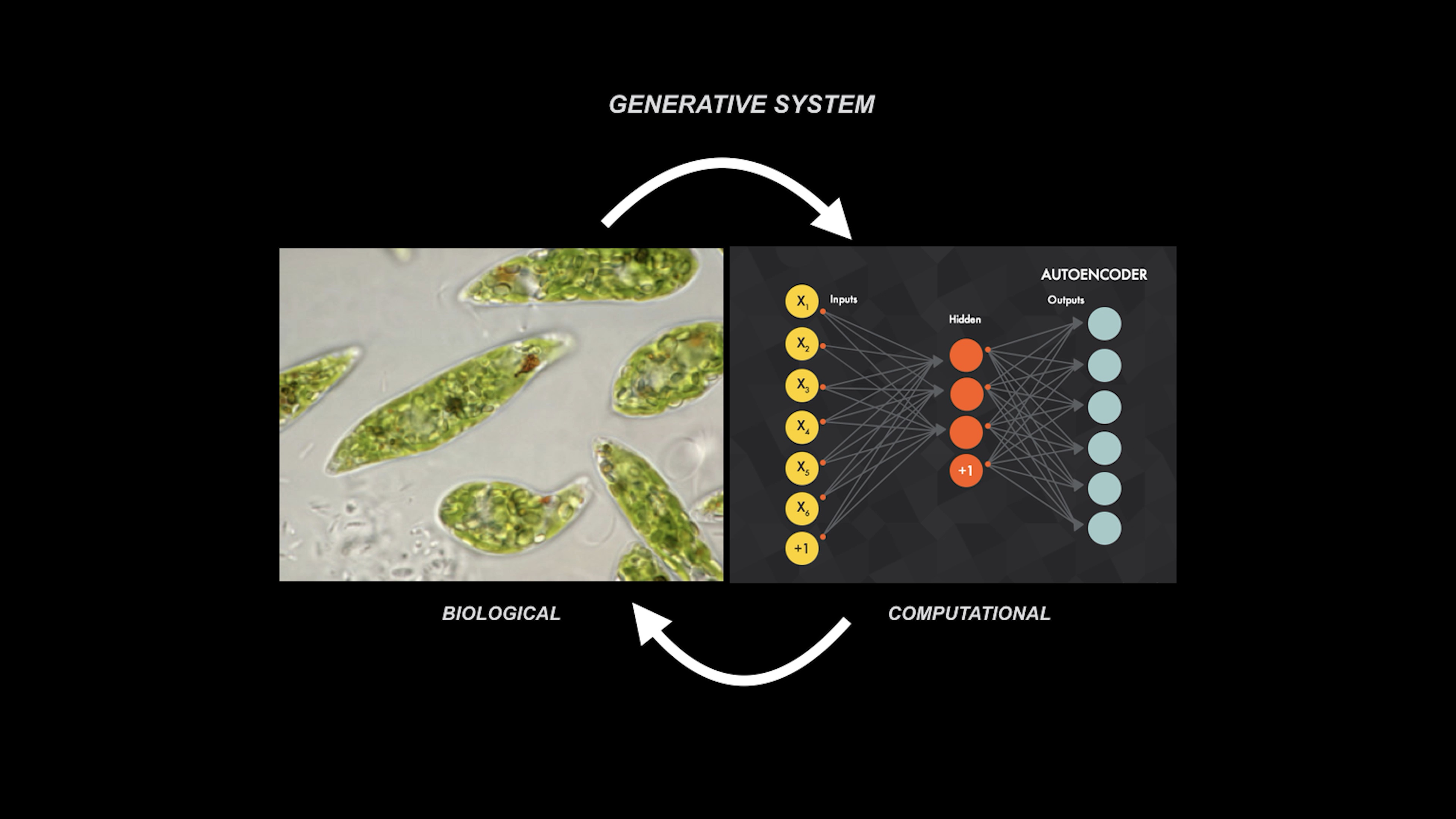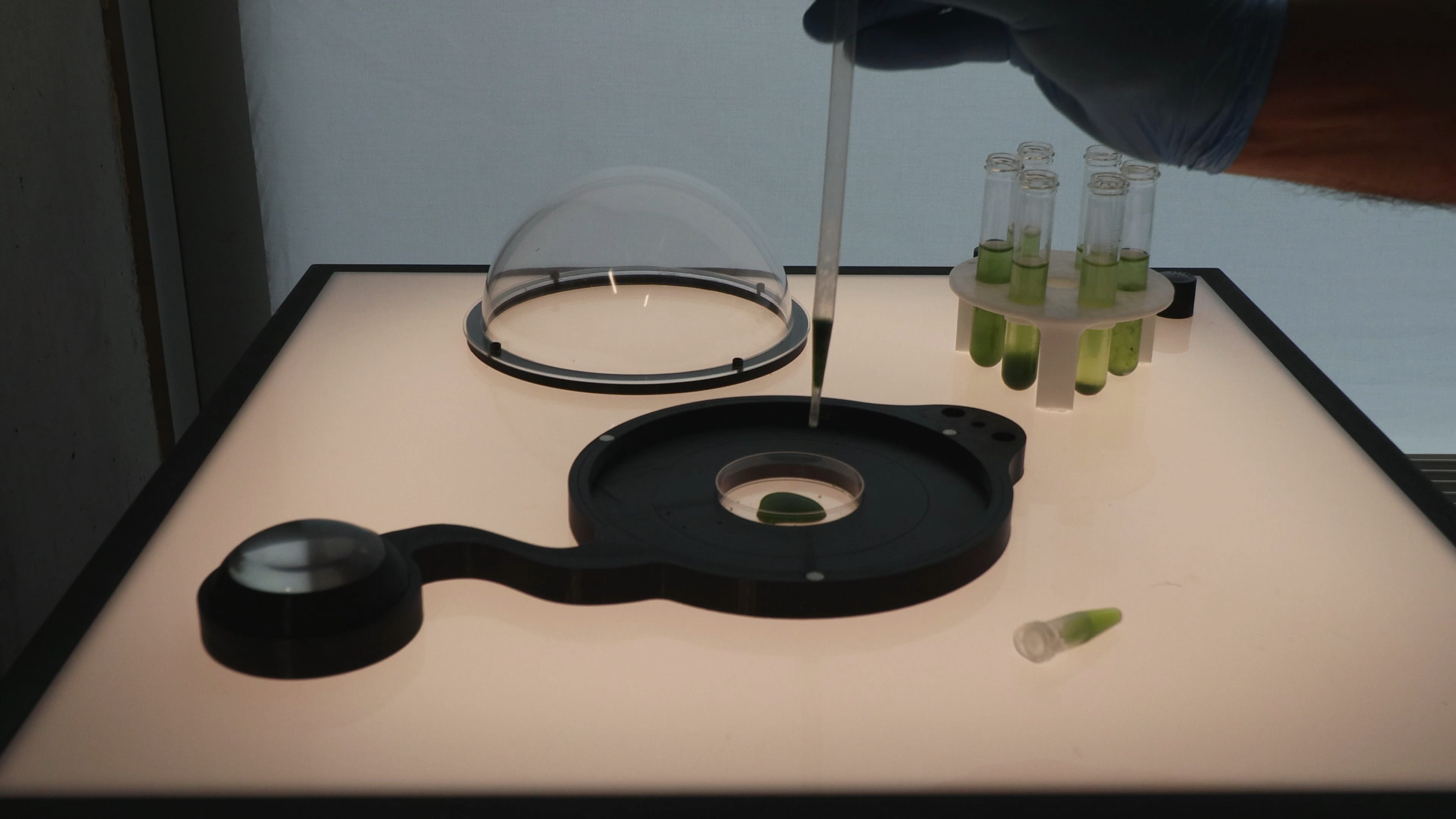Concept
Xenolalia is an art-science project that investigates computational and biological sentience through a live experiment. It brings together an artificial neural network and a colony of living microorganisms in a feedback loop where they collaborate to generate a speculative living alphabet. The spectators thus become witnesses to an uncanny form of communication which they are left to interpret. The system suggests future forms of interactions between artificial, carbon-based, and even xenobiological entities, which could potentially emerge in the future.


Process
The glyphs are created using an iterative morphogenetic process involving an artificial neural network known as an autoencoder and a colony of light-reactive microalgaes known as Euglena gracilis. The autoencoder has been pretrained on a dataset of handwritten digits. When noise is injected into the autoencoder, it outputs a first glyph proposal which is projected upon the petri dish. Attracted by the light, the microorganisms move towards the shape, acting as a living photographic substrate. The image they form is photographed and sent back to the autoencoder, which generates another image in response. By repeating this interactive conversation between the autoencoder and the algae colony, a computational-biological symbol slowly comes into being.
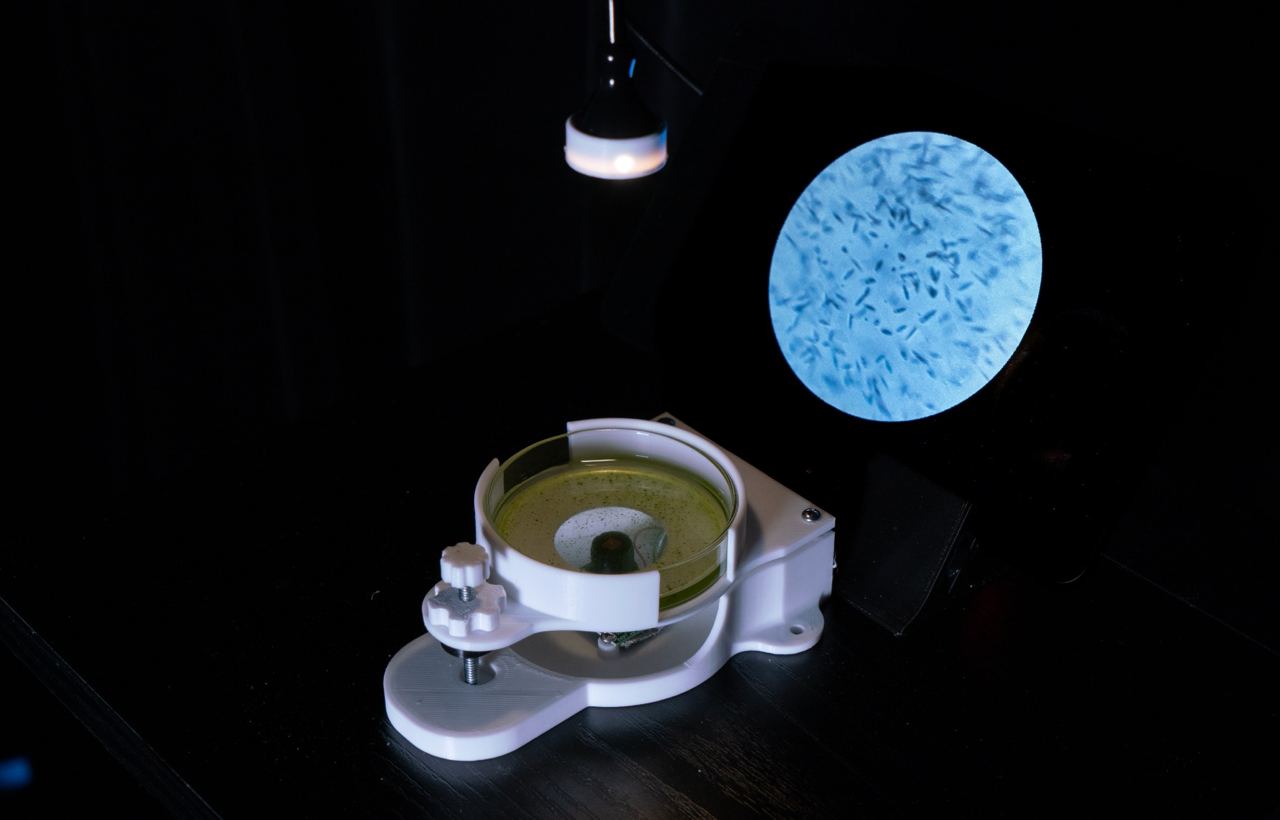
.jpg)
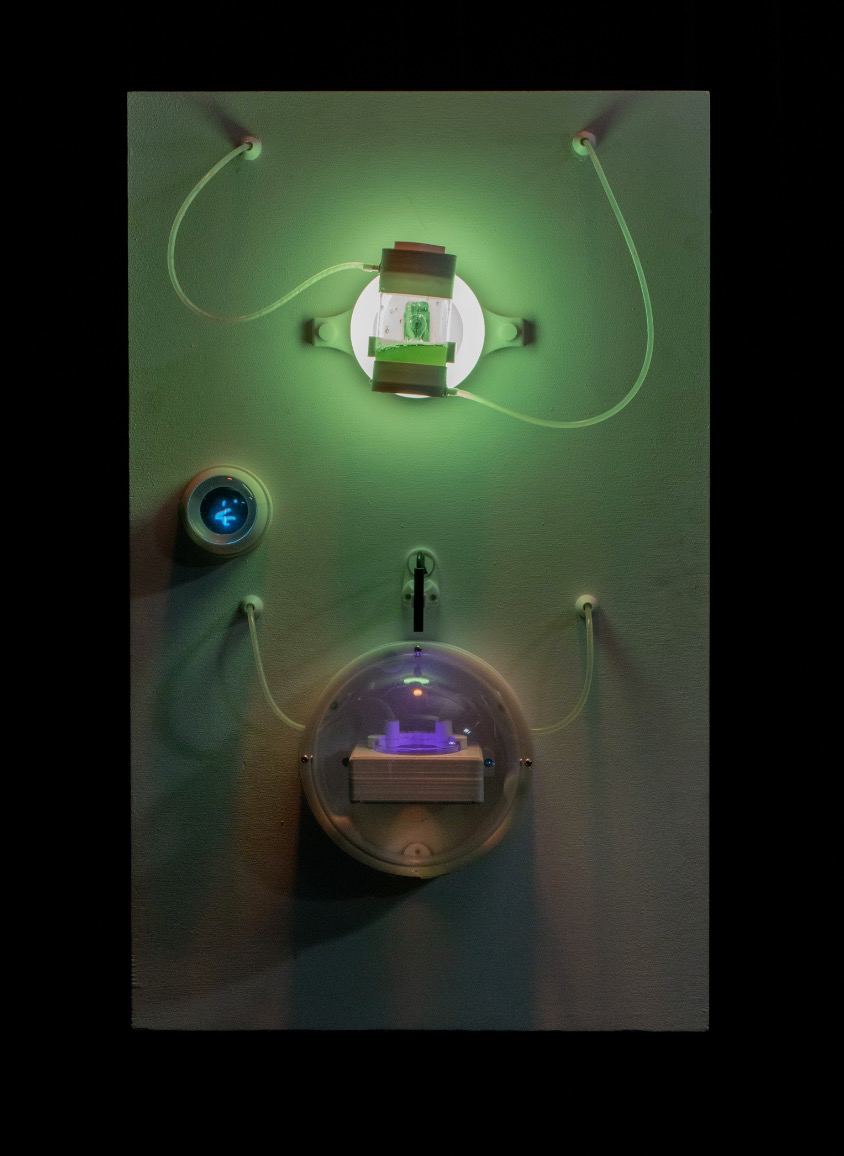
.jpg)
.jpg)
.jpg)
.jpg)
.jpg)
.jpg)
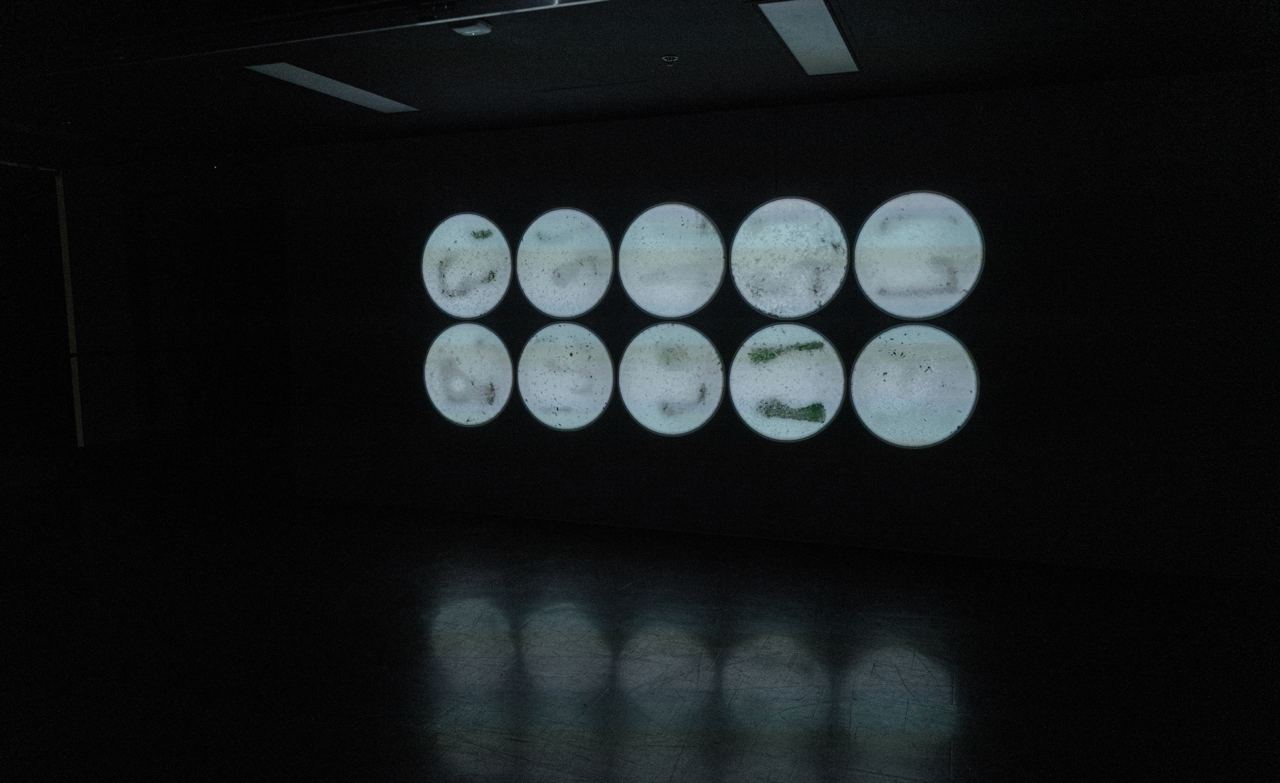


.jpg)

